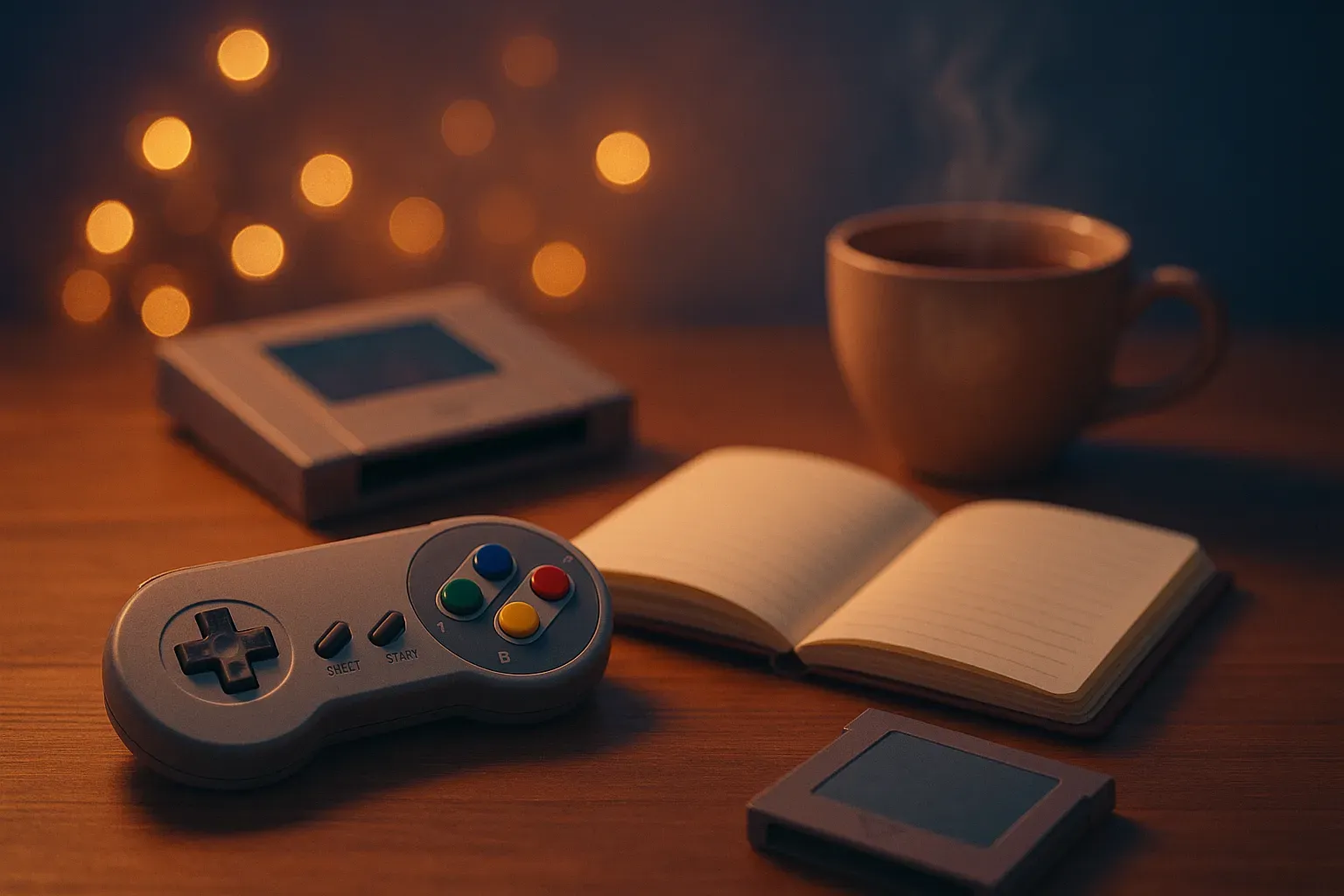7 Most Replayable Games: What Keeps Players Coming Back?
Discover the secrets behind gaming’s most enduring titles in this exploration of replayability. Drawing on insights from industry experts, this article unveils the key factors that keep players returning to their favorite games. From modding communities to procedural generation, learn what makes these games stand the test of time.
- Skyrim Mods Reinvent the Gaming Experience
- Isaac Balances Chaos and Mastery
- Last of Us Offers Layered Storytelling
- Marvel Rivals Thrives on Unpredictability
- Crusader Kings III Creates Unscripted Narratives
- Slay the Spire Mirrors Startup Challenges
- Breath of Wild Rewards Exploration
Skyrim Mods Reinvent the Gaming Experience
Skyrim has unmatched replayability.
What keeps it evergreen isn’t just the open world or character freedom—it’s the modding ecosystem. Every return feels like stepping into a new game. In one playthrough, I’m surviving harsh winters with realistic needs mods; in the next, I’m battling dragons with high fantasy combat overhauls. These player-driven tools endlessly reinvent the core experience.
As someone who evaluates gaming trends for EarthTechy, I’m drawn to titles that allow self-direction. Skyrim lets players write their own stories, test new builds, and push creative limits. That flexibility, combined with active community innovation, is what drives me back again and again.
Replayability thrives when a game invites reinvention. Skyrim does that better than any other title I’ve played.
 Nidhi Thakur
Nidhi Thakur
Co-Founder & Editor, Earthtechy
Isaac Balances Chaos and Mastery
For me, the game with the most replayability value is The Binding of Isaac. It’s the perfect storm of randomness, depth, and player agency. Every run feels different—new item combinations, unpredictable enemy spawns, and the constant challenge of adapting your strategy on the fly. What really keeps me coming back is how the game balances chaos and mastery: no matter how many hours I sink in, there’s always a new synergy to discover or a personal record to break.
In game design, we talk a lot about “meaningful choices.” The Binding of Isaac nails that—every item you pick up feels like a risk-reward decision that can completely change your run. It’s not just grinding for grinding’s sake; it’s about chasing the perfect run that’s always just out of reach. That tension is addictive.
I think any game that wants to achieve lasting replayability has to do what Isaac does so well: reward curiosity, embrace unpredictability, and make every decision feel like it truly matters.
 Marin Cristian-Ovidiu
Marin Cristian-Ovidiu
CEO, Online Games
Last of Us Offers Layered Storytelling
“The Last of Us” may not seem like the typical high-replayability title compared to open-world games or sandbox RPGs, but its deep storytelling, emotional weight, and varied difficulty modes give it surprising staying power. What brings me back is the grounded combat paired with stealth strategies that feel different each run. Playing on Survivor or Grounded mode adds real tension and forces you to rethink every resource. Plus, the character arcs hit differently once you know how things end—you start noticing subtle foreshadowing and layered dialogue. The “Left Behind” DLC also adds to the experience, offering a deeper emotional connection that makes each replay feel more complete.
 Xin Zhang
Xin Zhang
Marketing Director, Guyker
Marvel Rivals Thrives on Unpredictability
Marvel Rivals has incredible replay value—not because it’s perfect, but because it’s unfinished in the best possible way.
You drop into a match and instantly feel that mix of chaos and calculation. The maps are destructible, but what really draws you back is how every round feels like an improv scene with superpowers. You think you’re logging in to replay your favorite combo—maybe Storm and Magneto—but five minutes in, you’re completely off-script, wall-jumping as Rocket while lobbing explosives at a Doctor Strange who’s literally building cover from the rubble of your last mistake. It’s messy, unpredictable, and that’s the hook.
What really gives it replayability, though, is that the game essentially refuses to let you master it. The team compositions are constantly shifting. The meta isn’t settled. Everyone’s experimenting. And because of the sheer range of hero abilities—plus the destructible environments—you’re not just reacting to the other team, you’re reacting to the map itself. One round, a wall is your protection. The next, it’s gone. That means you’re never just memorizing strategies—you’re adapting in real time. It keeps you sharp.
And interestingly, the game encourages creativity over perfection. Some of the most satisfying moments aren’t about winning—they’re about syncing with a random teammate for an accidental team wipe or pulling off an unexpected combo no one saw coming. You don’t grind Marvel Rivals. You riff with it.
The replayability doesn’t come from a long list of features—it comes from the freedom to experiment, fail spectacularly, and find new fun in the same arena, over and over. It’s like jazz, but with laser beams and vibranium.
So yes, Marvel Rivals isn’t just a game I return to. It’s a sandbox of chaos where every match feels like a new episode in a show I didn’t realize I was co-writing. And that’s why I keep coming back.
 Derek Pankaew
Derek Pankaew
CEO & Founder, Listening.com
Crusader Kings III Creates Unscripted Narratives
Crusader Kings III’s emergent storytelling keeps me returning because no two campaigns ever unfold the same way. I might start as a minor Irish count planning to unite Ireland, but then my heir marries into Byzantine nobility, and suddenly I’m navigating Orthodox court intrigue.
The game creates unscripted narratives where player choices ripple across generations, making each playthrough feel like writing an alternate history novel where I’m both author and protagonist.
 Stephen Dove
Stephen Dove
Owner, Games Latest News
Slay the Spire Mirrors Startup Challenges
As a founder of Ray Browser and someone who’s spent a career around gamers and creators, I’d say “Slay the Spire” is one of the games with the highest replayability value. Its rogue-like mechanics, ever-changing deck builds, and strategic depth make every run feel fresh. I originally played it to relax between work sprints—but it ended up teaching me a lot about decision-making under uncertainty, which applies surprisingly well to startup life.
What keeps me coming back is:
1. Randomized gameplay – No two sessions feel the same, which mirrors the unpredictability of running a business.
2. Continuous mastery – You get better incrementally, and small improvements make a big difference, just like iterating features at Ray.
3. Modding & community – A passionate player base creates new challenges, keeping the game alive far beyond its core content.
Advice for startups building in gaming:
1. Prioritize systems that evolve – Build mechanics that reward repetition but never feel repetitive.
2. Design around community input – Encourage modding, customizations, or social challenges to extend lifecycle and loyalty.
3. Use analytics early – Observe what makes users return, and lean into it hard.
 David Diaz
David Diaz
Co-Founder and Chief Commerical Officer, Ray Browser
Breath of Wild Rewards Exploration
For me, the game with the most replayability value has been The Legend of Zelda: Breath of the Wild. What keeps me coming back is the freedom it offers—the open world is vast and full of hidden secrets, side quests, and varied ways to solve puzzles. Every time I play, I discover something new, whether it’s a hidden shrine or a different strategy to defeat enemies. The dynamic weather and physics system also add unpredictability, making each playthrough feel fresh. I appreciate that the game doesn’t force a linear path, so I can set my own goals and explore at my own pace. This sense of exploration and constant discovery encourages me to dive back in repeatedly, long after I’ve completed the main story. It’s a game that respects player creativity and curiosity, which is why it has such lasting appeal.
 Nikita Sherbina
Nikita Sherbina
Co-Founder & CEO, AIScreen







































